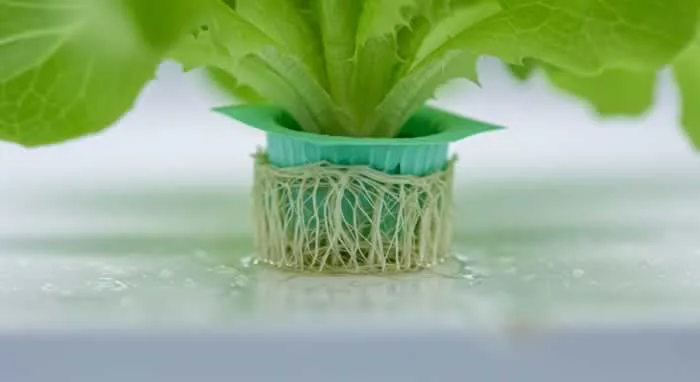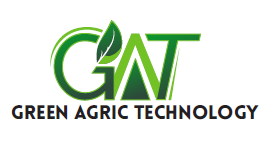Introduction
Across Nigeria’s cities and towns, a new kind of farming is taking root — one that doesn’t depend on soil, vast land, or predictable rainfall. It’s called hydroponics and vertical farming, and it’s redefining what’s possible in Nigerian agriculture.
As urban populations rise and farmlands shrink, these innovative systems are helping growers produce fresh vegetables, herbs, and fruits in controlled environments — on rooftops, in containers, and even in warehouses.
At Green Agriculture Technology (GAT), we see hydroponics and vertical farming as not just futuristic ideas, but practical, profitable solutions for today’s challenges.
What Exactly Is Hydroponics and Vertical Farming?
Hydroponics is a method of growing plants without soil, using nutrient-rich water to feed the roots directly. Vertical farming takes it a step further by stacking multiple layers of crops vertically, maximizing space efficiency.
Together, they allow farmers to produce up to ten times more food per square meter than traditional farming — with up to 90% less water usage.

This approach is especially valuable in Nigeria, where access to arable land is limited and climate conditions are unpredictable.
Why Hydroponics Makes Sense in Nigeria
For decades, Nigeria’s farmers have relied heavily on rain-fed agriculture, leaving them vulnerable to droughts and floods. With hydroponics, water is recycled continuously, ensuring plants get consistent nourishment year-round.
Hydroponic farming offers several advantages:
- All-year production: Farmers are no longer limited by rainy or dry seasons.
- Space efficiency: Ideal for urban areas where land is scarce.
- Faster growth: Plants grow up to 30–50% faster than in soil.
- Cleaner, pesticide-free produce: Ideal for health-conscious consumers.
Cities like Lagos, Abuja, and Port Harcourt are already seeing a rise in small-scale hydroponic setups producing lettuce, spinach, tomatoes, and herbs for restaurants and supermarkets.
From Plan to Profit: The GAT Blueprint
Setting up a successful hydroponic or vertical farm requires proper planning and expert guidance. At Green Agriculture Technology, we walk farmers through every step — from concept to harvest.
- Feasibility Assessment
Every project begins with analyzing location, crop demand, and available space. GAT experts help determine whether to use NFT (Nutrient Film Technique), drip systems, or deep-water culture setups. - System Design and Installation
Our engineers design modular, scalable systems using solar-powered pumps, LED lighting, and IoT sensors for monitoring nutrients and pH balance. - Training and Capacity Building
We train farmers to manage daily operations, troubleshoot systems, and optimize nutrient solutions. - Crop Selection and Optimization
The most profitable hydroponic crops in Nigeria include lettuce, basil, mint, strawberries, tomatoes, and bell peppers. - Market Integration and Sales Support
GAT helps connect growers with premium markets — supermarkets, hotels, and restaurants seeking pesticide-free, fresh produce.
Understanding Costs and Returns
Starting a hydroponic or vertical farm can range from ₦1.5 million to ₦10 million, depending on the system size and level of automation.
While that may sound like a major investment, the return is compelling. A 100-square-meter hydroponic system can produce up to 3,000 heads of lettuce per cycle, with gross margins reaching 40–60% once operational.
Within two years, most farmers break even, benefiting from continuous harvests, stable market prices, and reduced post-harvest losses.
Overcoming Local Challenges
Nigeria’s biggest agricultural challenges — power supply, startup costs, and technical know-how — can all be mitigated with the right approach.
At Green Agriculture Technology, we address these barriers through:
- Solar-powered systems that ensure consistent operation without relying on grid electricity.
- Flexible financing models and partnerships that support cooperative ownership.
- Technical support and maintenance programs that keep systems running efficiently.
With these enablers, hydroponic and vertical farming becomes not just sustainable, but scalable.
Real Success Stories
One of GAT’s clients in Lagos converted a small warehouse into a vertical lettuce farm using our smart hydroponic systems. Within six months, the farm was producing over 1,500 heads of lettuce weekly, supplying top restaurants and grocery stores.
Another farmer in Abuja, growing mint and basil for export, reduced water usage by 85% while maintaining consistent quality year-round.
These stories prove that with innovation and support, Nigerian farmers can thrive in the global agricultural economy.
The Future of Farming Is Upward
By 2030, Nigeria’s urban food demand is expected to double. Meeting that demand will require solutions that produce more food with less land, less water, and less waste. Hydroponics and vertical farming offer exactly that.
With growing investor interest, green technology adoption, and youth participation, the future of farming in Nigeria is vertical — and it’s already here.
Conclusion
Hydroponics and vertical farming are not just trends — they are the future of sustainable food production in Nigeria. They give farmers control, resilience, and profitability, even in challenging environments.
At Green Agriculture Technology, we’re leading the way with smart, solar-powered, and data-driven farming systems designed for Africa’s needs.
Whether you’re a commercial grower, an investor, or an urban entrepreneur, we can help you bring your hydroponic dream to life.
Learn more or request a feasibility consultation: https://greenagrictech.org/our-contact/





